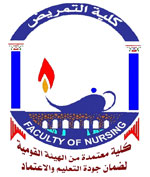This study aimed to shed light on the various alternative therapies for infertility used
among women, in addition to identifY the factors that might be related to use of alternative
therapies among women attending Assiut University Hospital, Obstetrics and Gynecology Clinics.
The study had been conducted at outpatient clinics of Obstetrics and Gynecology in Assiut
University Hospital. Any woman attending the clinic with the inclusion criterion of having
infertility, primary or secondary was eligible for inclusion in the study sample. A convenience
sample of 81 women fulfilling these criteria was consecutively recruited. An interview
questionnaire sheet was developed by the investigators to collect data. The sheet included four
sections divided to: first section for the socio demographic characteristics of women, second
section on menstrual history of women, third section for the obstetric history for secondary
infertility cases and the last section was concerned with infertility and alternative therapies. Data
were collected during the period from the beginning of October 2006 to the end of January 2007.
The study showed that the age of studied women ranged between 16 and 58 years, (85.2%) were
housewives and (56.8%) were illiterate. Also the study revealed that (77.8%) had primary
infertility while (22.2%) had secondary infertility. In (79.0%) of the sample, the wife was the
cause of infertility. It was clear that (43.2%) of the study sample have consulted physician but
(65.4%) of them have reported using alternative therapies as visiting holy shrines as a religious
practice, going to cemeteries, using "hegab" and medicinal herbs. As the results show, neighbors
were the main source of advice about the alternative therapies (56.6%). The study recommended
that successful infertility programs should include health education about the causes of infertility
in both men and women and where best to seek care. Alternative therapies must be provided with
proper training, facilities backup for referral to any health resource for the common goal of
improving the community health.
قسم البحث
مجلة البحث
Assiut medical
المشارك في البحث
تصنيف البحث
2
عدد البحث
Vol.4, No. 3
سنة البحث
2006
صفحات البحث
PP. 149-167
ملخص البحث

